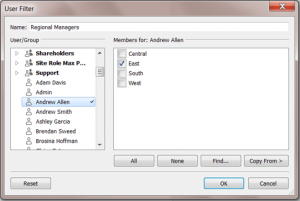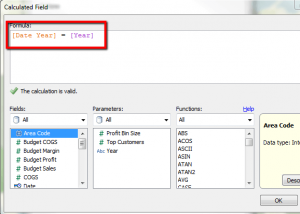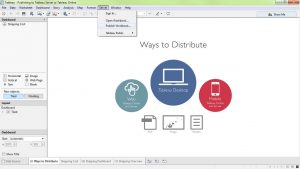
Top 5 Challenges of Migrating to Snowflake
January 5, 2023
How is Row Level Security Implemented in Power BI?
January 16, 2023Implement Row Level Security in Tableau
Today, associations of all sizes experience the ill effects of a few common ailments, such as compromise in confidentiality and time-management issues. How nice could it be to have a solution to show the viewers the data they need to see? Row Level Security in Tableau is the key!
Row Level Security in Tableau refers to limiting how much data (rows of information) a client can find in a particular data source or workbook. In this manner, we have consents in Tableau Server that control how the clients collaborate with content. Tableau Row Level Security is a technique for restricting access to information held inside Tableau workbooks by a select gathering of clients. Note that this is not the same as Tableau permissions, which are utilized to either permit or prevent access to content. If you give them consent, you can handle who can see or update a worksheet. Clients with authorization practical permissions can access various data thanks to row-level security. For example, one client would see information beginning in the US, while another could see data originating in Asia.
Users of Tableau who have access to a workbook can view all the information contained given course. When you implement Tableau Row Level Security, you will want to figure out which pushes every client can see after they have effectively signed into the server. It applies to data sources with live connections and extracting sources with tables stored as various tables.
To implement row-level security in Tableau, you should make user filters and calculated fields to control access to information at the row level. It is one of the primary methods mentioned here, which is easy to implement; however, other than this, many different methods are also available.
Here Are the Top Steps to Implement Row Level Security in Tableau
Step 1: Create user filters for each group of users that should have access to different data. You can create user filters in Tableau Desktop by going to the Data menu and selecting “Create User Filter.”

Step 2: Create a calculated field for each user filter. This calculated field will return a value of “True” if the current user should have access to the data and “False” if they should not. To generate a calculated field, go to the Analysis menu and select “Create Calculated Field.”

Step 3: Drag the calculated field onto the Filters shelf and set it to “True.” This will filter the data so that only the rows that the current user has access to are shown.
Step 4: If you want to hide the data entirely for users who do not have access, you can use a data blending connection and a Null value filter to accomplish this.
Step 5: Publish the workbook to Tableau Server or Tableau Online.

Step 6: On the server, assign the user filters to the appropriate groups or individual users.
Step 7: Test the row-level security by logging in as different users and verifying that they can only see the data they are supposed to have access.
Conclusion
Tableau delivers the possibility to apply security at the row level. It likewise offers two choices to carry out this security, yet for specific applications, they might have a few negative points. There may be issues when having a lot of clients, adding new clients when the security is applied, and the workbooks are issued, and with general performance.
The well-known ways to implement row-level security in Tableau incorporate utilizing a Client Filter, Dynamic Filter, and a Security Group.
- The User Filter approach includes planning every client to the row they should access, for instance, a specific country.
- The Dynamic Filter approach includes joining an information source and a security table with a rundown of usernames and rows they should access.
- The Security Group approach includes making groups of users and planning the groups to the rows they should access.
The security group strategy is a decent elective while having a lot of clients because instead of planning each of them to the dimension, you have to prepare the group that can contain different clients with the measurements. It likewise permits adding new clients without editing all the workbooks with the new mappings. Also, the performance of the security group is superior to the security table.
Our group of master experts has a wide variety of involvement with building custom solutions for Tableau. Contact us if you would like to know more!




